ARIMA Modeling
library(forecast)
# Generated Time Series
set.seed(1)
x = 100 + arima.sim(n = 100,
model = list(order = c(1, 1, 1), ar = .1, ma = .2))
# Plot the series
plot(x, main = "Simulated ARIMA(1,1,1)")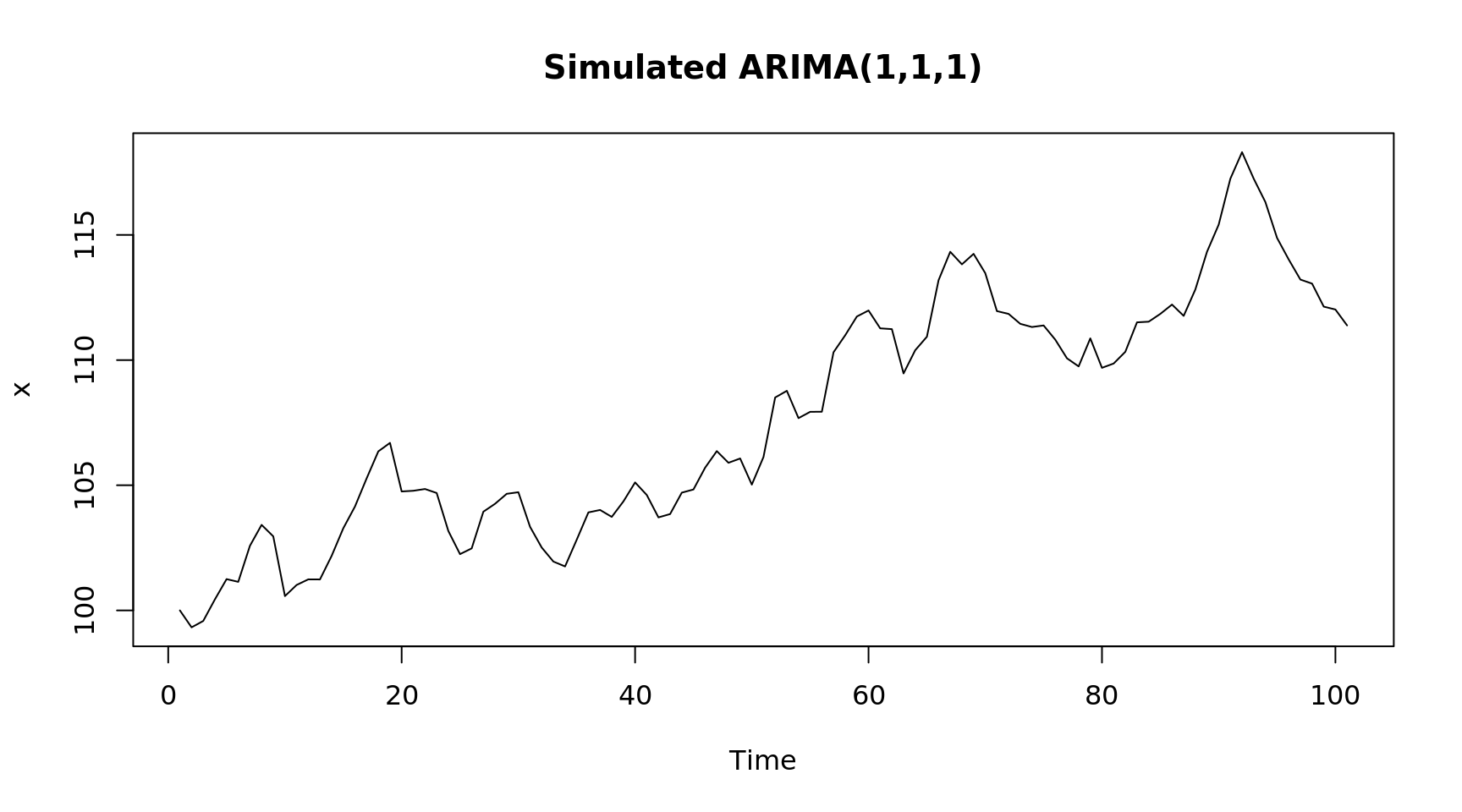
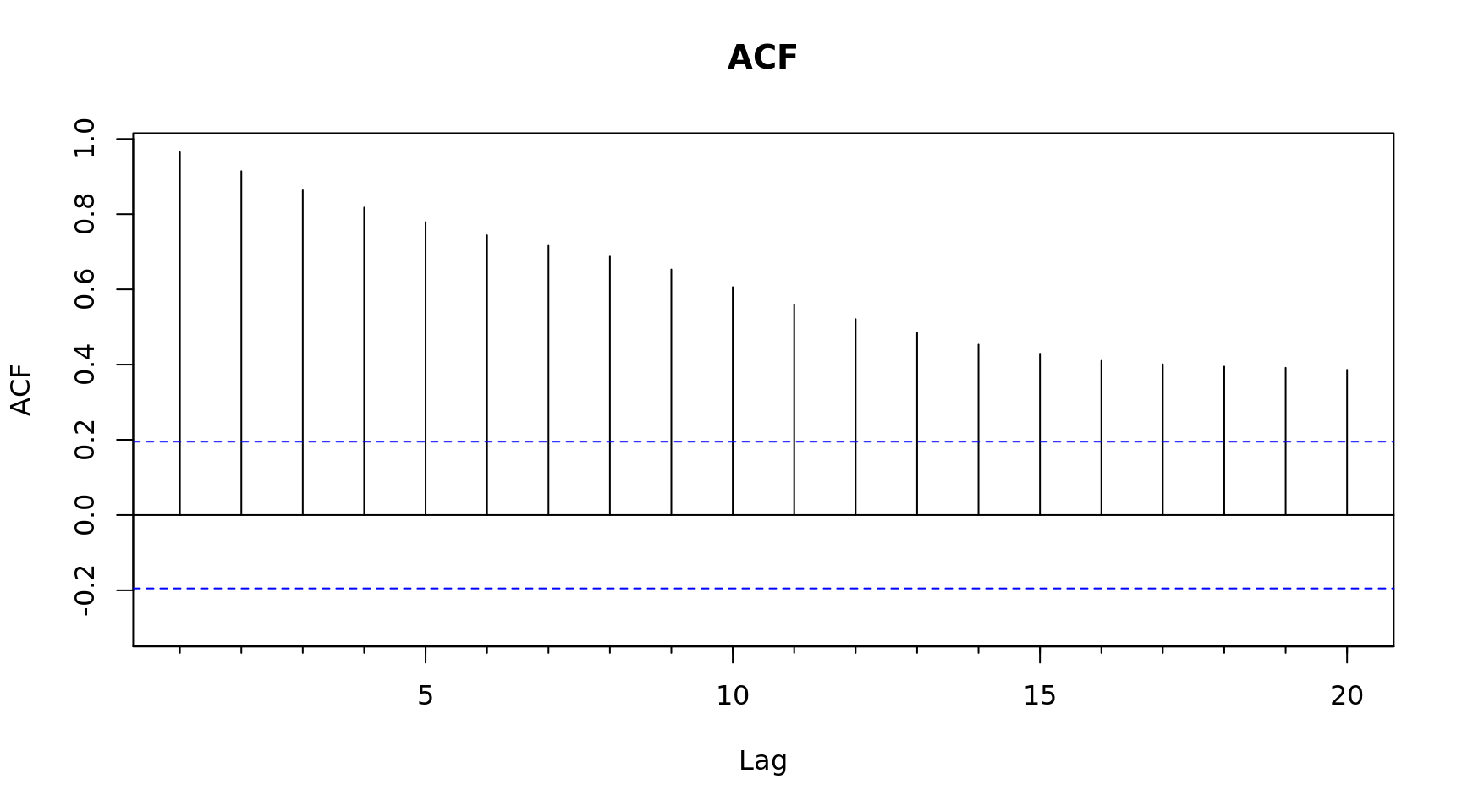
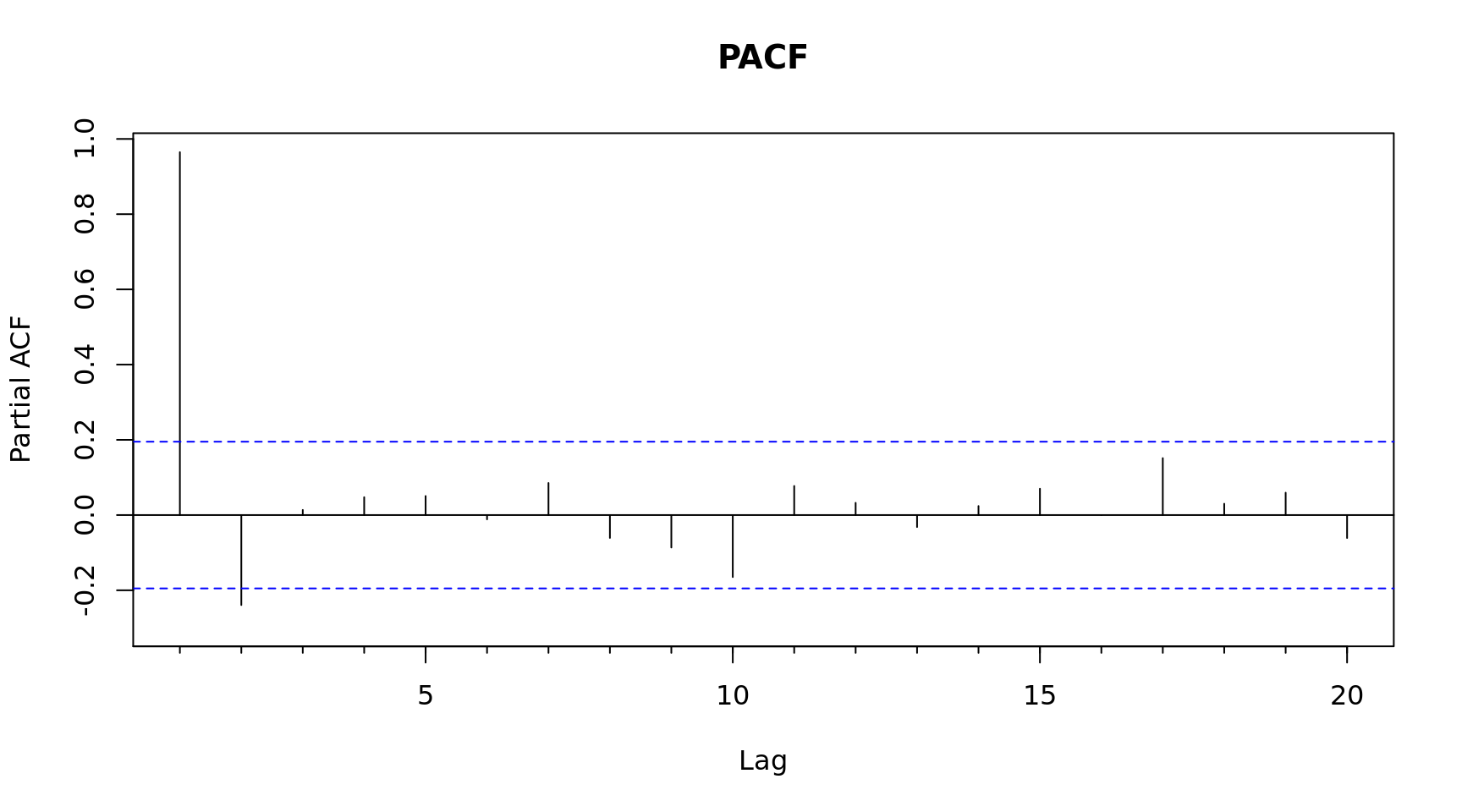
# How many differences does it take for the data to be stationary?
# 1
plot(diff(x), main = "First Order Difference")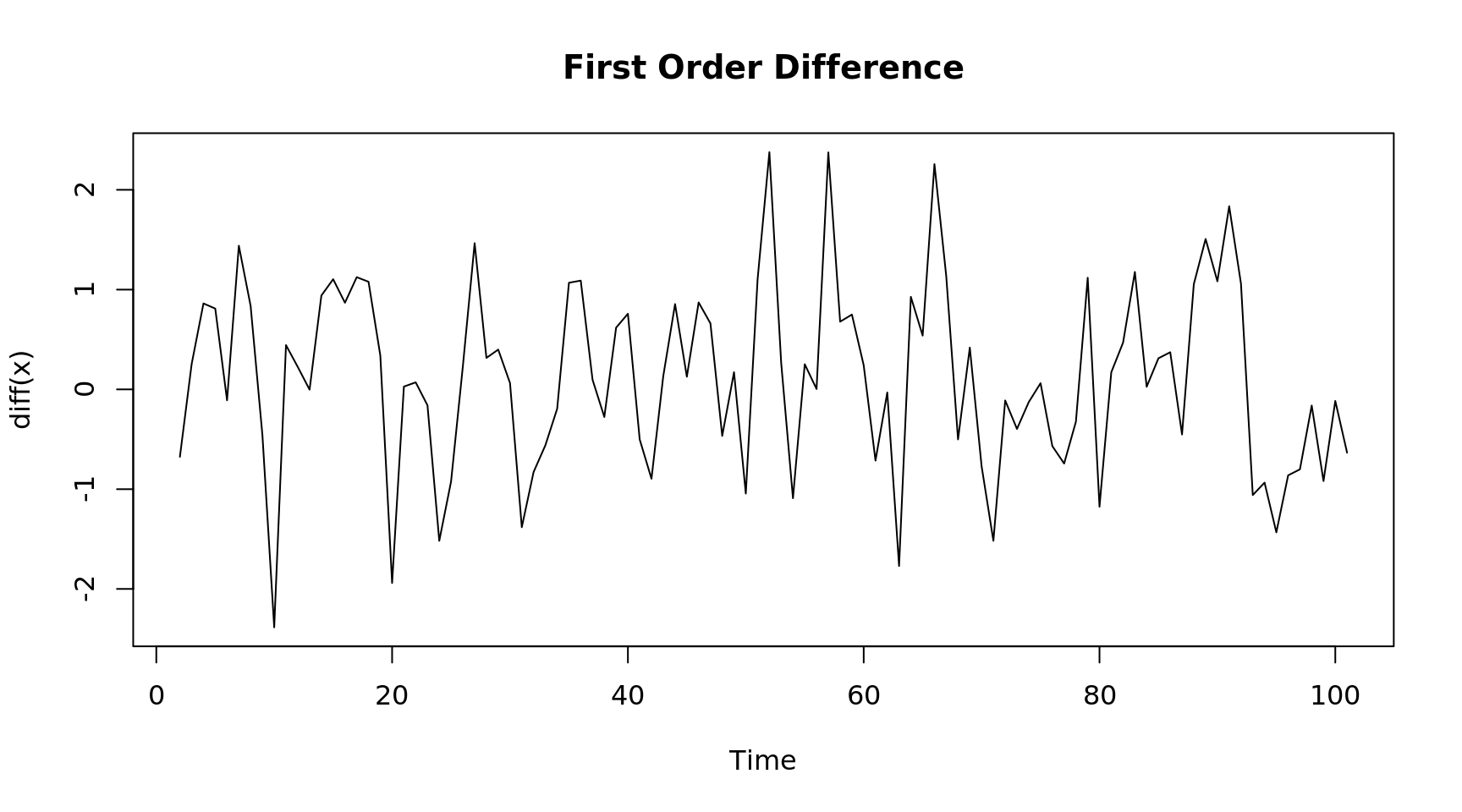
# Check the Acf/Pacf with differences
Acf(diff(x), main = "ACF 1 diff") # One significant spike, suggests MA(1)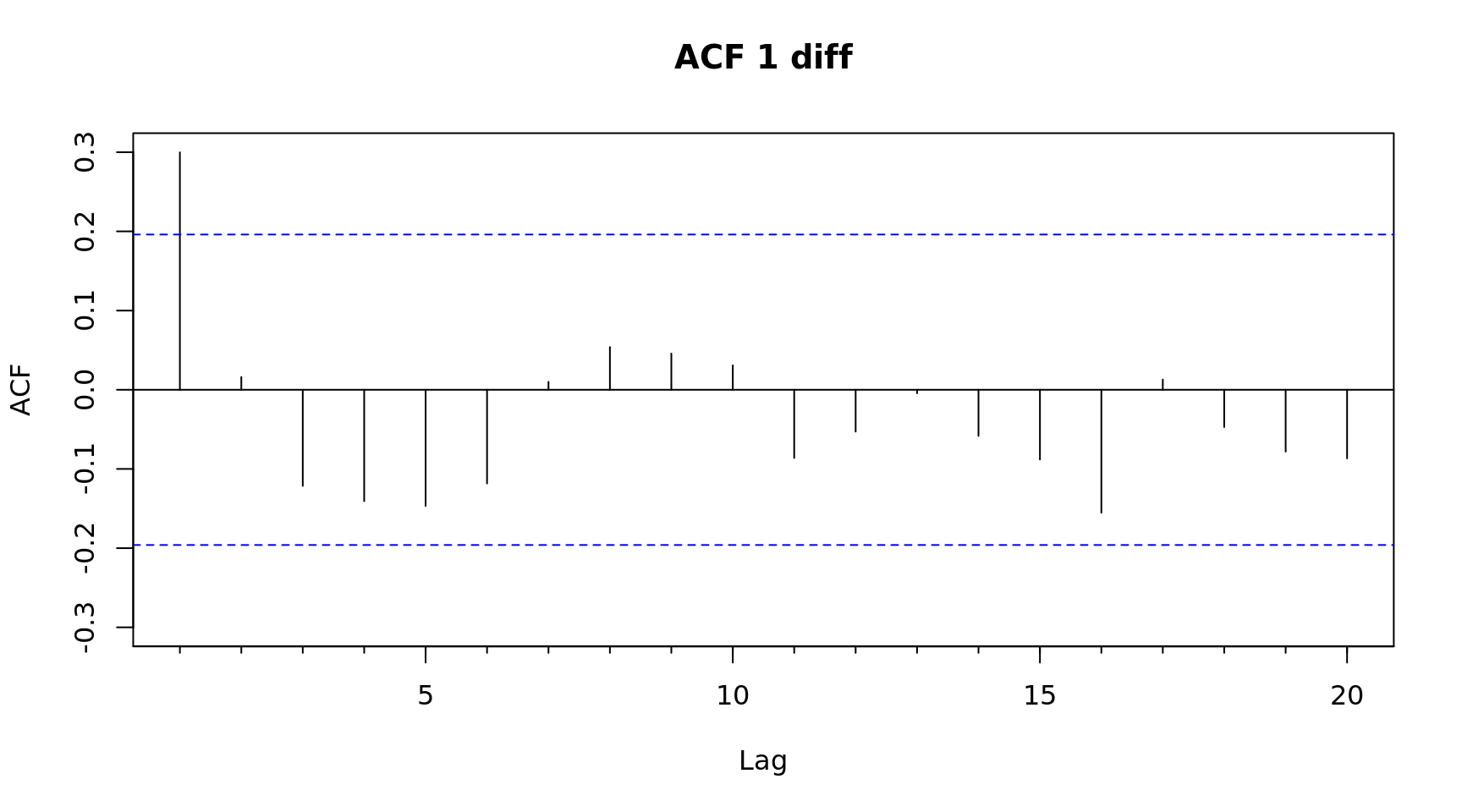
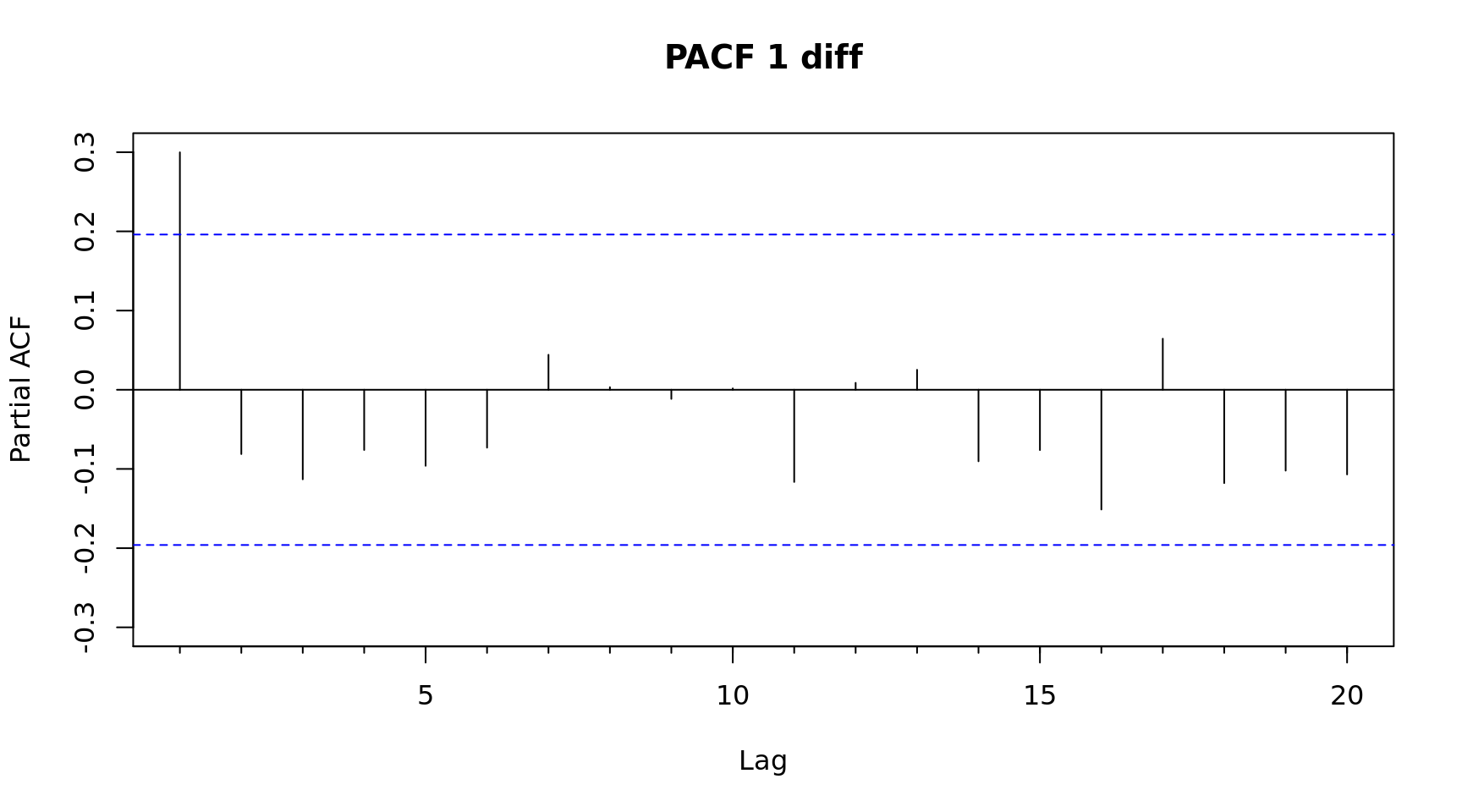
# Suggested model ARIMA(1,1,1)
mdl1 = arima(x, c(1,1,1))
# How do the ARMA terms compare with the terms used in the sim?
# AR1: .18 vs .1 in the sim
# MA1: .14 vs .2 in the sim
summary(mdl1)
Call:
arima(x = x, order = c(1, 1, 1))
Coefficients:
ar1 ma1
0.1838 0.1449
s.e. 0.2544 0.2499
sigma^2 estimated as 0.7854: log likelihood = -129.87, aic = 265.74
Training set error measures:
ME RMSE MAE MPE MAPE MASE
Training set 0.07980263 0.8818683 0.6973907 0.07372578 0.6471377 0.936633
ACF1
Training set -0.005918057Series: x
ARIMA(0,1,1)
Coefficients:
ma1
0.3043
s.e. 0.0882
sigma^2 estimated as 0.7972: log likelihood=-130.1
AIC=264.2 AICc=264.32 BIC=269.41 df AIC
mdl1 3 265.7356
mdl2 2 264.1965